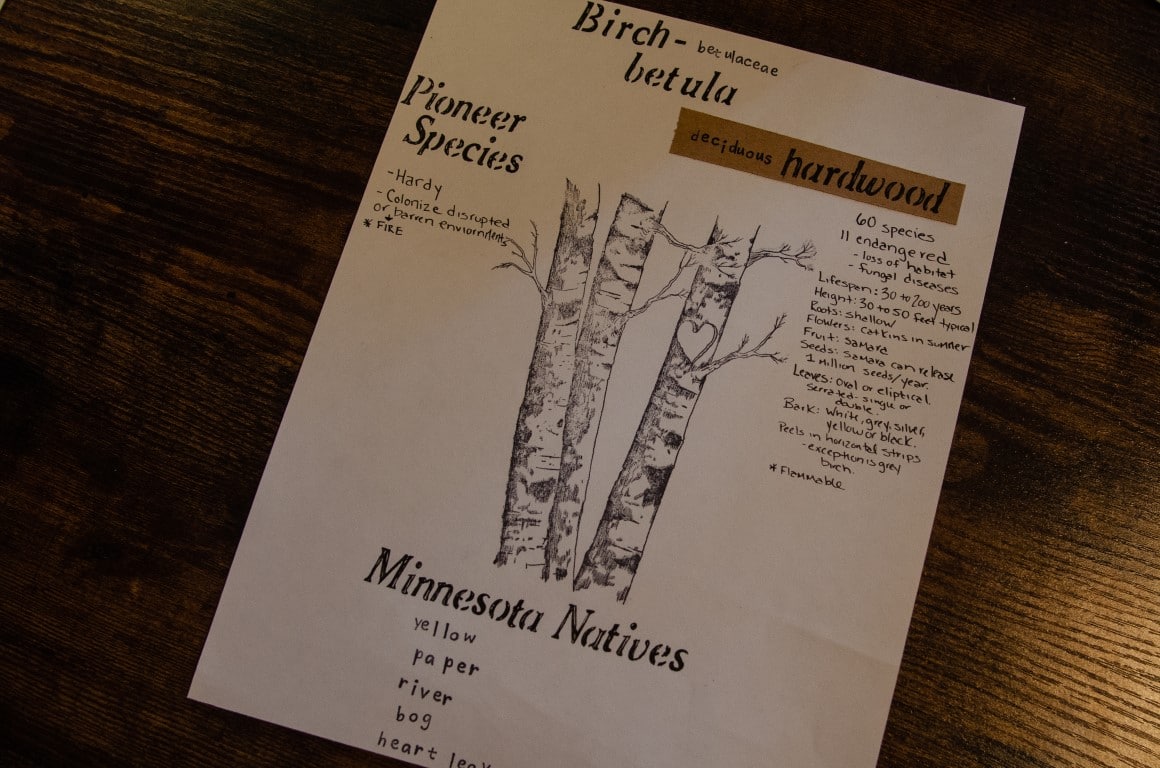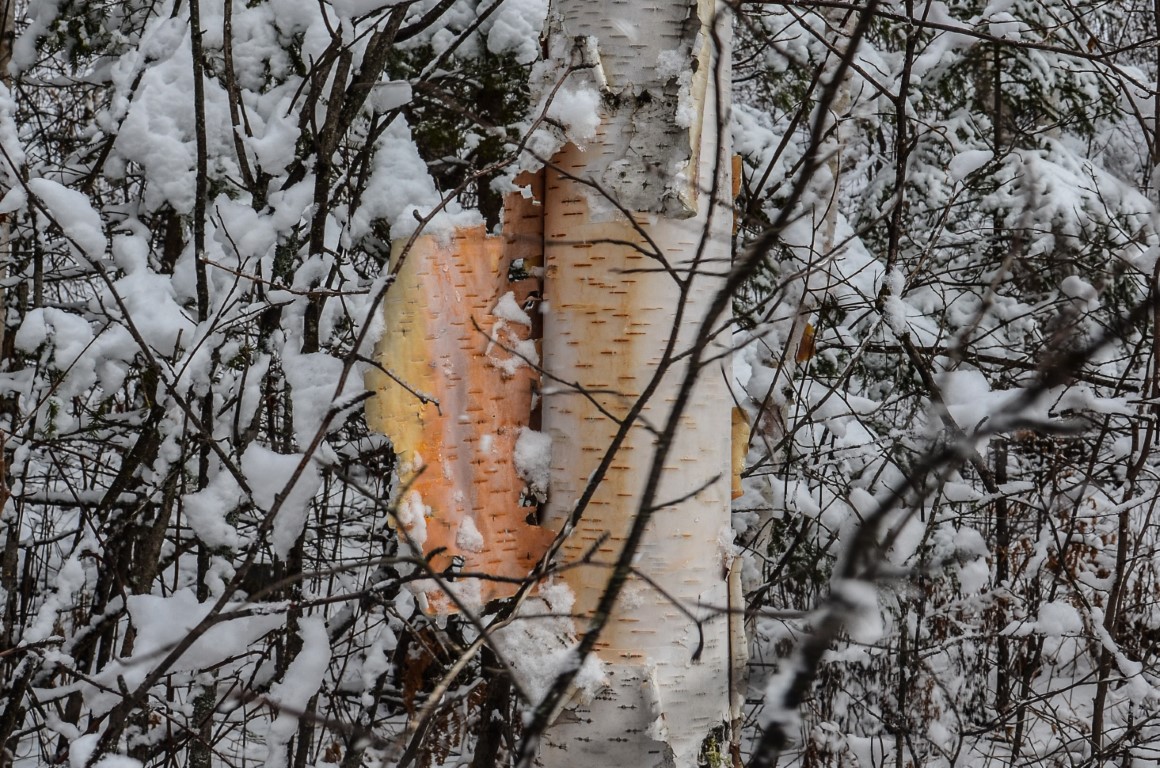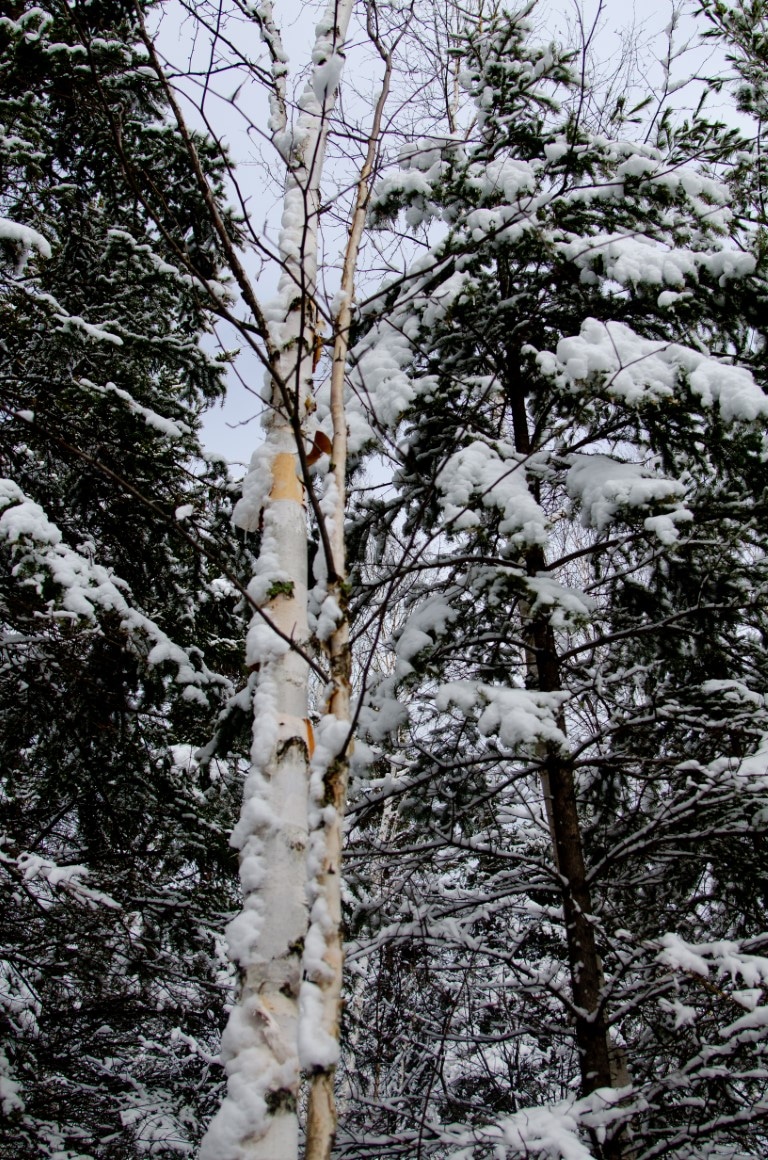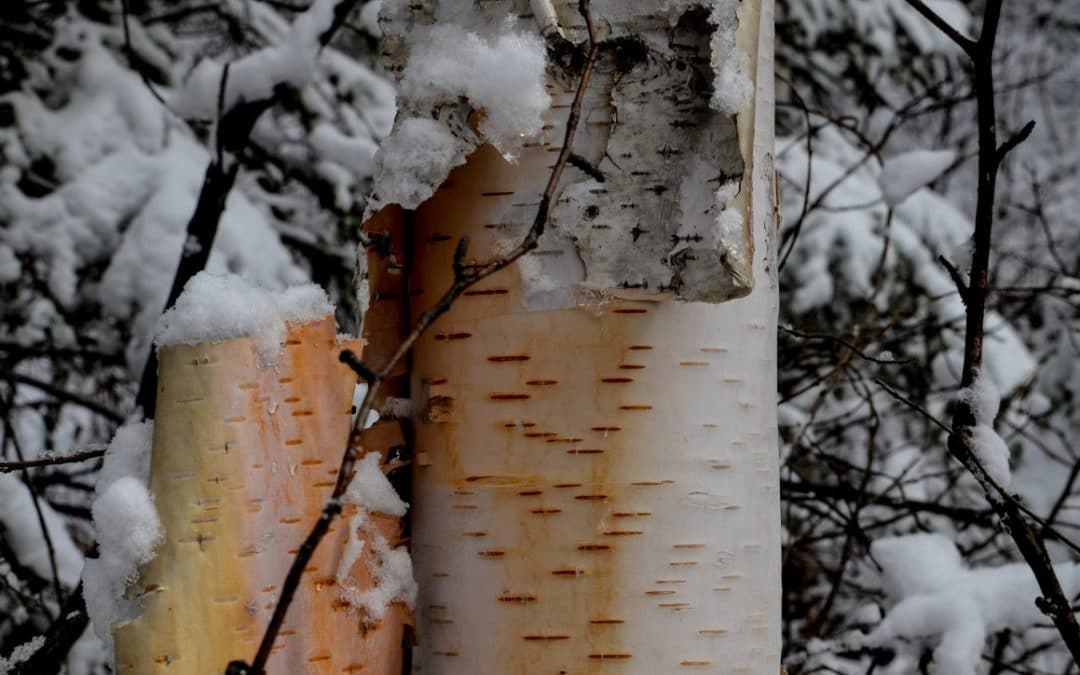Though melting quickly, we found snow in the Superior National Forest this on our venture inland from the lodge and Lake Superior. While hiking along the Tomahawk snowmobile trail in Isabella, we took a moment to get up close and personal with one of our favorite friends, the paper birch tree.
After our visit, we took some time to research and learn more about this beautiful tree, and we’re happy to share what we learned with you!
Nature studies are a great way to enjoy nature when it’s too cold or wet outside…or when you would simply rather stay indoors next to the fireplace with your nature journal.

Birch trees are pioneer species, which means that they are very hardy, and can quickly take over newly barren or disrupted environments. New birch trees commonly appear after a forest fire.
Birch trees belong to the Betulaceae family, and their genus name is Betula. There are over taxa of birch trees, 11 of which are endangered. They are short-lived, and are sensitive to loss of habitat and fungal diseases.
Our Minnesota native birch trees are the yellow, paper, river, bog, and heart-leaved birch trees. The tree that we spent time with this week is a paper birch. The bark of a paper birch peels in horizontal strips, and is white on the trunk, and reddish-brown on young twigs. Trunks are usually single but occasionally will cluster.
Its leaves are green in the spring and summer, and a golden yellow in the fall. Paper birch leaves are egg-shaped, with the edges being irregularly double-toothed.
They are useful to wildlife and humans, alike. Moose nibble on the papery bark in the winter and deer eat the leaves in the fall. Rabbits graze the small seedlings and saplings, and beavers and porcupines enjoy the inner bark. Various birds and forest floor creatures feast on the seeds, and hummingbirds feed from the sap holes created by woodpeckers looking for insects. The birch tree supports all sorts of forest life!
We use birch trees for making paper, furniture, woodenware, canoes, syrup, tea, medicine for skin rashes, burns, and blood diseases.
We’re really glad that we spent time learning about birch trees – and we can’t wait to observe them as they move through spring and summer and into fall.
We hope that you have a great weekend! We’ll be back next week with more from the North Shore. We have waterfalls to chase!




Recent Comments